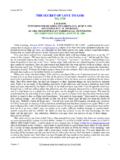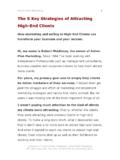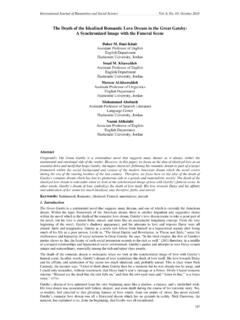Transcription of 1. Why Does Haiku Attract So Many People?
1 HPR2012 Keynote Speech Why Haiku is Popular? Akito Arima Good morning, ladies and gentlemen, my fellow Haiku poets! It is my great honor and pleasure to be here at this beautiful Asilomar and to have this opportunity to talk about our traditional genre of literature called Haiku . I would like to begin with a question, why so many people , not only in Japan, but people elsewhere in the world are attracted to Haiku . Then I would like to talk about the subject and the form of Haiku in Japan, my speculation on animism as the basis for Haiku and mutual understanding among different cultures, and finally about the spread of Haiku to the West and its influence on Western poetry.
2 So let me begin. 1. Why does Haiku Attract So many people ? There are millions of Haiku poets in Japan. One or two teachers lead each of hundreds of groups of Haiku poets and publish a monthly or bimonthly Haiku journal. The largest journal is Hototogisu, which is said to have several hundred thousand subscribers, and the smaller groups or journals may have a hundred members or subscribers. Suppose each Haiku group has 1,000 members. Since there are roughly 1,000 Haiku groups in Japan, we can try a simple calculation: 1,000 multiplied by 1,000 makes one million. Besides that, many Haiku poets write Haiku without belonging to a group, and submit their Haiku to newspaper columns and Haiku magazines.
3 Why are there so many Haiku poets in Japan? The three greatest reasons are these: (1) Because Haiku is short and has the fixed form of 5-7-5 Japanese syllables. This makes Haiku more accessible. Longer and freestyle poems are difficult to write and read. A poet needs to find an appropriate length and a style to match the subject each time when writing, which requires a special skill and a substantial knowledge of rhetoric, a philosophical backbone, a passion for love and joy, and more. The longer and freestyle poetry is not for everybody but for a handful of genuine poets. (2) Because the theme or the subject of Haiku is almost fixed, it is about nature and about seasons.
4 It is easier to find a subject for Haiku , such as a slight shift in seasons or seasonal life, and there is no need to add one's emotional interpretation and express it in Haiku . In short, Haiku is descriptive. Kigo are classified and listed in order to compose Haiku , which are intended to be about a season. I would like to emphasize here that the main theme or the subject of Haiku is kigo. Haiku is a poetry of seasons. (3) Because Haiku is short, people can remember them easily. For example, everybody, even foreigners who do not speak Japanese, can learn Basho's Haiku by heart due to its conciseness.
5 Its shortness enables many people to write and enjoy Haiku . 2. Nature as the Main Subject of Poetry in Japan and China I would like to give a couple of examples to show the importance of nature in Japanese and Chinese poetry. To begin with, let me quote from the many sh , the first Japanese anthology of poetry that was compiled during the seventh and eighth century AD. The title literary means The Collection of Ten Thousand Leaves . It contains about 4,500 poems in various forms, such as tanka, which consists of 5-7-5-7-7 Japanese syllables, and ch ka written by repeating the 5-7 syllable verses several times, followed by the 7-7 syllable verse at the end.
6 Here are two poems from the many sh . On the eastern fields I can see the flames of morning rise, Turning around, I see the moon sink in the west. Kakinomoto no Hitomaro (late 7th century AD). (Translation by Ian Hideo Levy). Coming out from Tago's nestled cove, I gaze: white, pure white the snow has fallen on Fuji's lofty peak. Yamabe no Akahito (? 736 AD). (Translation by Ian Hideo Levy). They do not contain words like beautiful , sad , or what the author is feeling; there is no emotion expressed directly in the poems. You may notice that the poems are merely depicting nature.
7 This is one of the remarkable features of Japanese poetry. The same can be said for poems in Tang Period in China, especially when we take a look at the works of Wang Wei (701 761). Li Po (701 762) and Tu Fu (712 770), who lived in the same age, also wrote many good descriptive poems. Meanwhile, in the West during the 7th and 8th century, the dominant stream of poetry was lyric poetry of love. I doubt that they had any poems strictly focused on nature during that time in the West. Later, in the 17th to 18th century, Haiku became independent from renga and renku and began to thrive along with tanka.
8 Matsuo Bash and Yosa Buson wrote many good Haiku and both were very active in promoting the genre. An old pond, A frog jumps in, The sound of water. Basho What quietness! Penetrating the rocks, The voices of cicadas! Basho from now on every night will dawn with white plum blossoms Buson sea in spring undulates gently all day long Buson As you can see, many of their masterpieces are descriptive poems. Thus in Japan and in China, notably in Haiku , we can say that nature plays an important role as the subject of poetry. 3. Influence of Regional Features on Poetry Why then did Japanese and Chinese poets wrote a lot about nature?
9 I think it is due to the natural features of the east coast of the Chinese continent, and the climate particular to the main Japanese islands. Also, we cannot forget the presence of animism still remaining in our lands in Japan, Korea, and in China. When we roughly classify the climate in the world, it can be divided into three regions: desert, grasslands, and forest. In deserts, the ecosystem is rather simple, the lack of water is making life tougher. Quick decision-making is always necessary for survival in such an environment and therefore strong leadership is requested. Monotheistic religions such as Judaism, Christianity, and Islam started and flourished in such an environment, while animism died out early under such conditions.
10 Next let's take a look at culture nurtured in grasslands. Europe and most of the North America continent belongs to this mild-weathered grassland zone. Since the climate is mild, polytheism had been thriving for a long time. Greek mythology, Norse mythology, and Celtic mythology were standard beliefs for a long time. And Christianity entered and changed people 's life; however, a touch of animistic habit still remained in certain places. In China, Korea, and in Japan, there are many forests due to the monsoon climate with lots of rainfall. Nature in this region is milder and the polytheism is still believed, preserving animism in this region.







